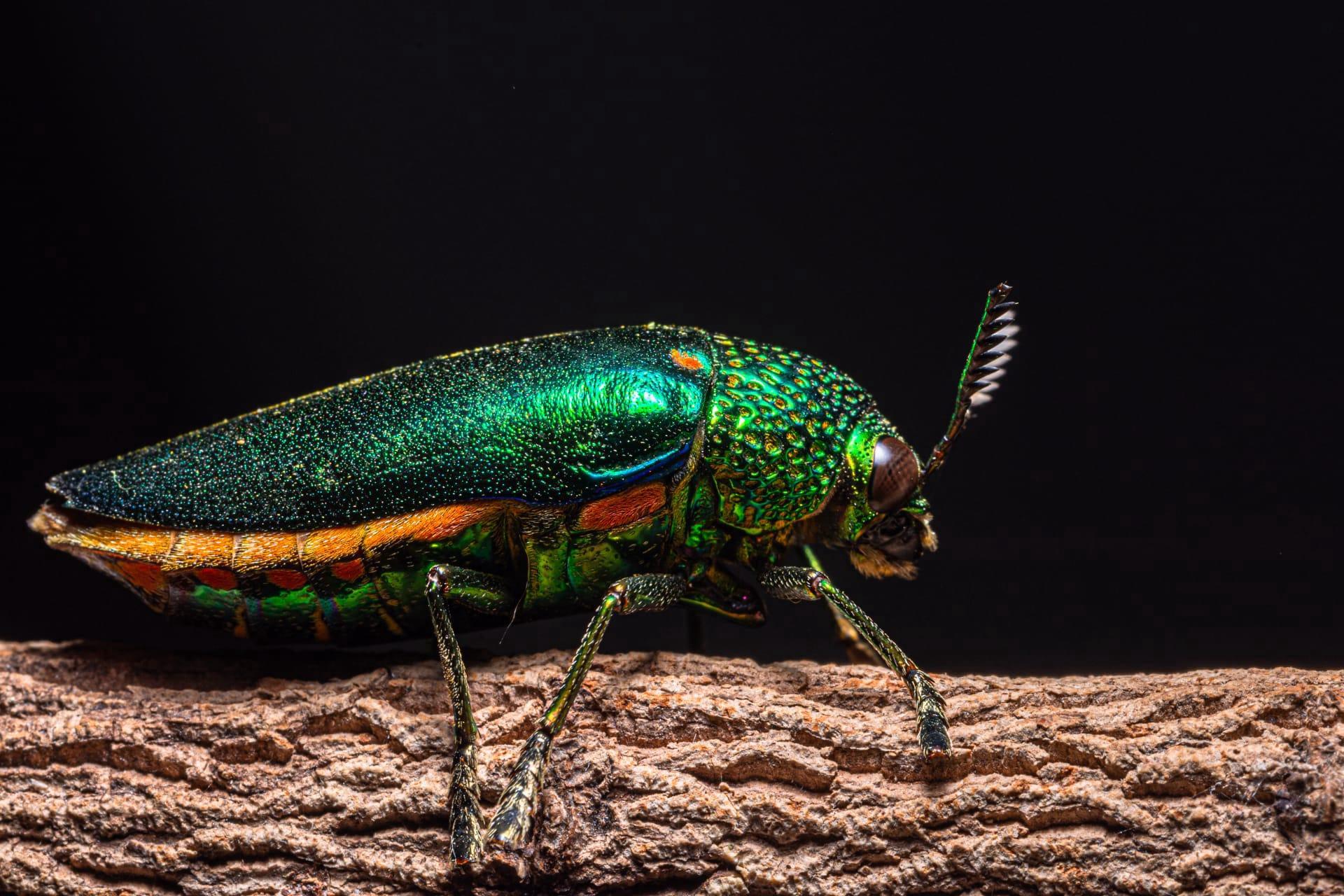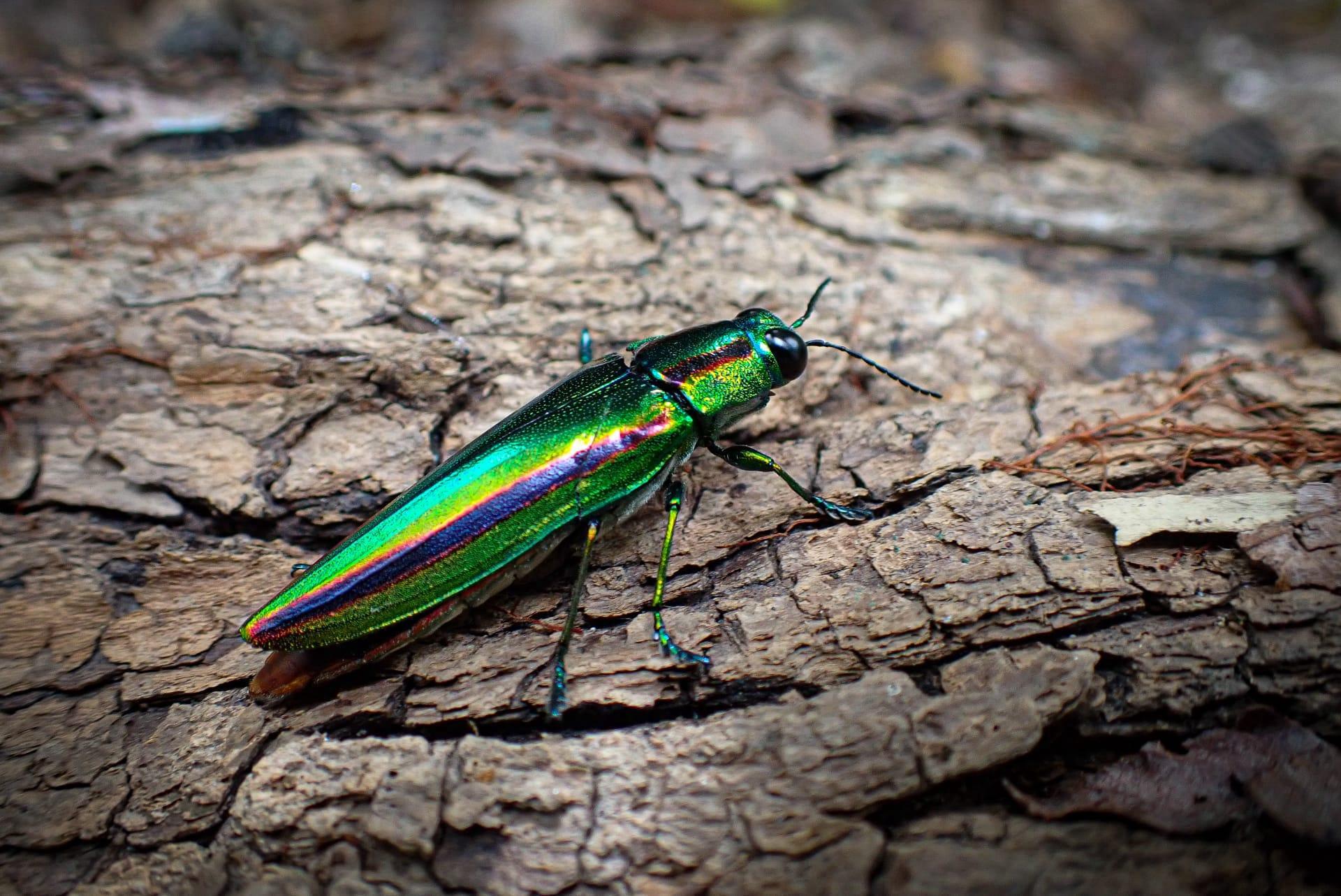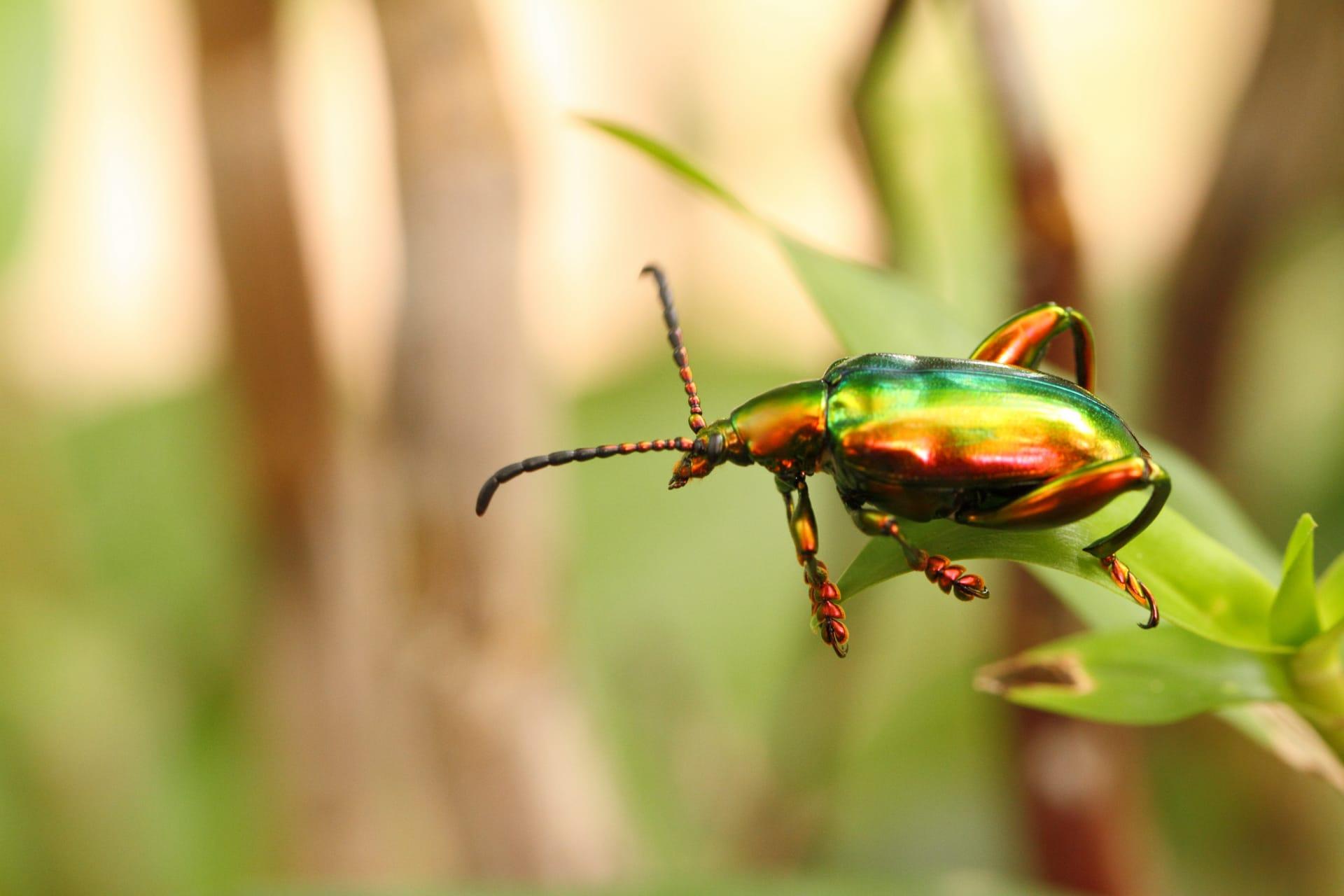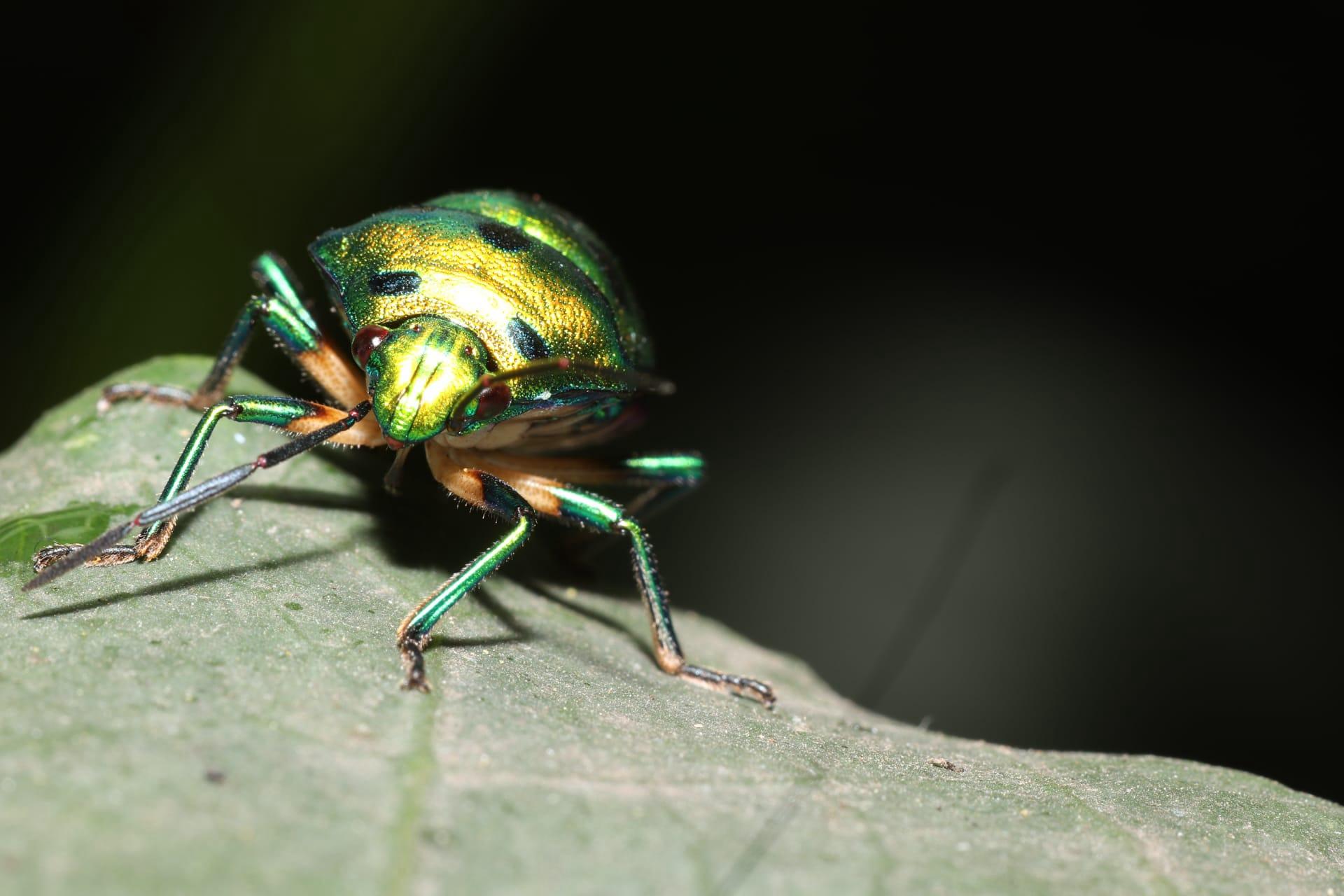Jewel Beetle Characteristics
- Home /
- Mini Encyclopedia /
- Animal /
- Jewel Beetle Characteristics
1
Jewel Beetles, known for their vibrant, iridescent colors, are a fascinating group in the insect world. Typically, they measure between 0.5 to 3 inches (1.3 to 7.6 cm) in length, though size varies among the 15,000 species. These beetles generally live between 1 to 2 years, depending on environmental factors and predation.
The most remarkable organ of the Jewel Beetle is its exoskeleton, particularly the elytra, or the hardened forewings. These elytra don't just provide protection; they are also responsible for the beetle's stunning colors. The colors aren't due to pigments but are the result of the microscopic structure of the elytra, which reflects light in different wavelengths, creating a shimmering effect. This feature not only makes them attractive but also aids in camouflage and mate attraction.

2
Question: Why do Jewel Beetles have such vibrant colors?
Answer: The vibrant colors of Jewel Beetles are not due to pigments but result from the microscopic structure of their exoskeleton, particularly the elytra. This structure reflects light in various wavelengths, producing the iridescent colors seen. These colors serve multiple purposes: they act as camouflage against predators by reflecting the green foliage, and they play a crucial role in communication and mate selection. The unique coloration helps beetles recognize and attract potential mates, essential for their reproduction.

3
Jewel Beetles are adept fliers, capable of quick and agile movements in the air. Their flight is powered by their second pair of wings, while the colorful elytra open up to aid in flight stability. On the ground, they move with less agility, often seen scurrying in a zigzag pattern.
In terms of feeding, Jewel Beetles are primarily herbivorous. Adult beetles often feed on leaves, flowers, and fruits, while the larvae typically consume wood or plant debris. Some species specialize in feeding on specific plants, which influences their distribution and habitat choice. The larvae's wood-boring habits are particularly noteworthy, as they can impact forest health and are considered pests in some regions.

4
Jewel Beetles inhabit a variety of environments, ranging from tropical rainforests to arid deserts. They are most commonly found in regions with abundant vegetation, as their diet mainly consists of plant materials. Their iridescent colors blend perfectly with the environment, providing a natural defense mechanism against predators.
Reproduction in Jewel Beetles involves distinct rituals. Males often use their vibrant colors to attract females. After mating, females lay eggs in crevices of tree bark or wood. The larvae, known as grubs, undergo several stages of development, feeding on the wood and eventually emerging as adults. This life cycle, from egg to adult, can vary in length, influenced by factors like species and environmental conditions.

5
Book: "The Iridescent World of Jewel Beetles" by Dr. Emily Harrington, published in the UK in 2018. This book provides an in-depth look at the life cycle, behavior, and habitat of Jewel Beetles. Dr. Harrington, an entomologist, combines scientific research with high-quality photographs to bring these insects' vibrant world to life. The book is particularly noted for its detailed descriptions of the beetles' iridescent colors and the science behind them.
Book: "Beetles in Jewels: An Exploration of Coleoptera" authored by Dr. John Langley, released in the USA in 2020. This book focuses on the broader family of beetles, with a significant portion dedicated to Jewel Beetles. Dr. Langley explores their ecological importance and the challenges they face, including habitat loss and climate change. The book is praised for its accessible language and practical insights into beetle conservation.